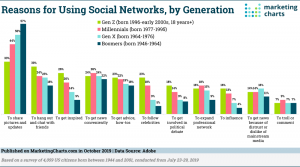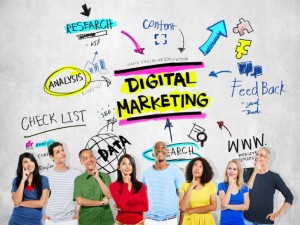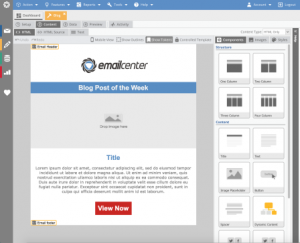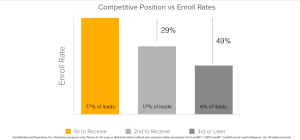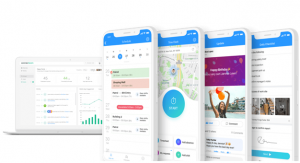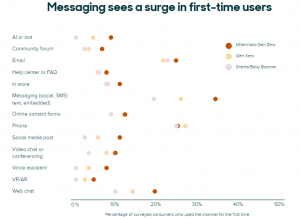Here’s a mind-blowing bit of information. In 2016, mobile commerce sales in the US will total $ 123 billion by the end of this year. This reflects a 39% increase from last year (and a 95% jump in 2014). Clearly, more and more people are discovering the advantages of mCommerce transactions. And US manufacturers and distributors are quick to see the business value of both eCommerce and mCommerce.
Why eCommerce and mCommerce? Why Now?
Digital commerce is an umbrella term that includes both eCommerce and mCommerce.
Manufacturers and distributors are implementing eCommerce and mCommerce solutions to provide their buyers with the convenience, speed, and flexibility that aren’t always available through face-to-face interactions. Buyers appreciate the ability to choose, order, or monitor product delivery status from anywhere—on the shop floor, in the stock room, or on the go, and as such, suppliers have found this to be an effective way to increase sales and customer loyalty.
Given buyers’ growing appetite for speed and convenience, it’s no surprise that the popularity of digital commerce has exploded. And even as mCommerce grows, eCommerce is not disappearing. It’s been around for 20 years, and this channel is expected to generate $ 262 billion in online US sales in 2016.
eCommerce and mCommerce Capabilities Converge
Until several years ago, mobile web sites could only serve as as a place where buyers could get detailed product and company information and compare prices—that’s it. Frustrated with non-responsive websites, users would then purchase items via desktop. But now, use trend survey results have shown that users have the same expectations whether they’re purchasing on a desktop or mobile device.
Now, users are comfortable enough with the mobile environment to make purchases on phones and tablets, whether that’s through a responsive site or native mobile app. All online retail buyers want an experience that’s attractive and trouble-free. They insist on being informed, persuaded (but not too much), and ushered through the buying process, without any glitches.
Companies seeking to increase the value of their online retail operations know that they are in unfamiliar territory, too.
The good news is that eCommerce and mCommerce offer key features that will keep your company competitive and your digital infrastructure strong.
Benefits of Top eCommerce and mCommerce Solutions
If buyers want roughly the same thing from their buying experience no matter what device they use, which capabilities are must-haves? eCommerce and mCommerce solutions must:
- Be easy to open and quick to load. These days, no one wants to wait.
- Have a clean visual design That means no small fonts, cramped screens, or visual distractions. Buyers expect excellent product listings with large images and words and pictures optimized for the screen size of their respective devices.
- Use simple navigation. It needs to be as simple as point and click (or tap).
- Provide a quick checkout process. Past order duplication and real-time inventory updates are two ways to make this process easier for customers.
- Use intuitive search. A commerce site or app needs to provide information that’s meaningful to buyers by using predictive functionality.
MCommerce and the Rise of Native Mobile
The biggest technology innovation in mCommerce has been native mobile app development. 85% of consumers prefer native mobile apps over mobile websites. A native mobile app is developed specifically for—and directly installed on—mobile devices. It’s a reliable mode for commerce: because it’s developed specifically for the mobile device’s operating system, it offers quick performance. Native mobile apps also allow customers to build and save orders even when they’re offline, and the orders can be sent as soon as the device is back online. Integrating with the device’s hardware, native mobile apps enable additional functions, such as importing contact information for easy checkout processes or using the device’s built-in camera as a barcode scanner. The strongest mCommerce solutions are native mobile applications.
Omnichannel Selling with eCommerce and mCommerce
Manufacturers and distributors rely on fast order fulfillment to keep their businesses profitable.
Combining eCommerce and mCommerce firepower gives suppliers a flexible way to deal with change in the B2B market.
In a strategy proven to increase customer lifetime value, manufacturers and distributors implement omnichannel sales to sell to their customers in as many ways as possible. A strong omnichannel selling strategy includes the online channel, comprised of eCommerce and mCommerce, but also the in-person sales channel. Suppliers have found success optimizing their in-person sales channel by providing their reps with mobile order writing tools, automating the previously transactional elements of the sales appointment and increasing the level of strategic value they are able to provide their customers.
Has your business implemented online sales channels with eCommerce and mCommerce channels? Let us know about your experience in the comments.
Digital & Social Articles on Business 2 Community(44)

